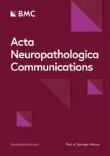
Abstract
IDH-mutant astrocytomas have a more indolent natural history and better prognosis than their IDH-wild type counterparts, but are still graded according to schemes developed prior to the recognition of this type of neoplasm as a distinct entity. Homozygous deletion of CDKN2A has been proposed as a molecular correlate of aggressive behavior in these tumors, and may be incorporated into future grading systems in an effort to improve prognostic stratification. Fluorescence in situ hybridization (FISH) is a common ancillary testing modality used to assess CDKN2A status, but the specifics of how to best interpret FISH results for prognostication of gliomas have not been clearly defined in the literature. To address this issue, we performed a retrospective analysis of prospectively collected CDKN2A FISH data from 108 primary and 43 recurrent IDH-mutant astrocytomas diagnosed between 2007–2020 at the University of Pittsburgh Medical Center. High level CDKN2A homozygous deletion was rare in primary tumors and was identified more frequently in recurrent tumors. Multivariate Cox Proportional-Hazards analysis demonstrated that histologic grade and CDKN2A status are independent predictors of survival, and the prognostic value of CDKN2A is maximized by applying a threshold of ≥ 30% of tumor cells with homozygous deletion by FISH to define a positive result. At this threshold, CDKN2A deletion significantly stratified survival of histologic grade 4 tumors, but grade 2 and 3 tumors rarely exceeded this cutoff value and did not show worse survival. Lower thresholds identified additional lower grade tumors, but were not prognostically useful. Compared to prior studies, the lack of prognostic significance of CDKN2A homozygous deletion by FISH in grade 2–3 IDH-mutant astrocytomas may reflect differences in cohort populations or technical differences between testing modalities. D efinitive criteria for determining CDKN2A homozygous deletion by various methodologies will be critical if this is to be included in future grading schemes.



No comments:
Post a Comment